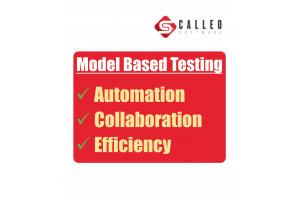Micro Focus has recently released Model Based Testing, a brand new functional test management platform.
Model Based Testing enables collaboration between testers and subject matter experts (SMEs).
Model Based Testing uses AI to increase the efficiency of your software testing. It also facilitates cross-functional collaboration and makes software testing much easier to manage.
Model Based Testing provides several useful business benefits
- SMEs and Testers can collaborate efficiently
- SMEs can define and create end-to-end business process tests
- Testers can ensure all aspects of an application are tested
- Business Analysts can access end-to-end flows and coverage
Model Based Testing is available either as:
- Part of the Micro Focus ValueEdge suite, as an add-on to the ValueEdge Quality module (previously known as Octane).
- A standalone SaaS product.
In this post, we dive a bit deeper into Model Based Testing to understand how it works, and why you should consider it.
First, though, let’s address the elephant in the room…
Collaboration Between Test and The Business… Haven’t we heard this before?
Throughout my 30 years in software development, collaboration between testers and SMEs has been one of the holy grails promised by tools vendors.
There have been many attempts at cross-functional collaboration, and almost as many failures.
There have been a few notable successes though. One particularly useful, and well-used tool is Micro Focus’s own Business Process Testing (BPT). BPT is a great example of an effective, cross-discipline test tool. This, of course, begs the question, why have Micro Focus created another functional testing collaboration tool?
While Perfect For Some, BPT Does Have Limitations
Now, I love BPT. I have loved it since the day it was released. I have long championed its ability to foster collaboration and increase visibility, and I’ve seen it used very successfully in many different organisations. But as smitten as I am, I will admit that it does have limitations.
While BPT is a perfect tool for some, it isn’t a standalone product.
BPT is firmly embedded within ALM QC. You need to log on to ALM QC to use it, all tests are held in ALM QC, and all tests must be created in an ALM native format; Sprinter, UFT, Manual etc.
Also, with BPT a tester must select which processes to run to achieve optimum test coverage. This can be aided by assigning risk and linking defects, but even with that help it is still a manual intensive, and therefore slow and costly, operation. This is fine if you only have a few business processes, but these days many organisations have thousands of business processes.
What Does Model Based Testing do Differently?
Well, Model Based Testing is more flexible, more powerful, and therefore more useful, than any other test collaboration tool.
Like its predecessors, Model Based Testing is based on the idea of reusable, componentised functional test chunks, known as Units. Units are then dragged and dropped to form Models (end-to-end processes) via an easy-access GUI. Typical units would be things like; login, search for an item, and pay with a credit card.
Unlike its predecessors, Model Based Testing is not tied to a test framework.
Units are independent and reside in GitHub. Units can be made with Micro Focus UFT, but they can also be created with third-party test tools.
In another giant leap forward from previous collaboration tools, Model Based Testing leverages AI to create efficient test sets. It does this by analysing the different Paths through your system and creating test packs with optimum coverage of your Units and Models. This process reduces manual effort, accelerates testing, and eliminates human error.
The video below provides a great summary of Model Based Testing
Would Your Business Benefit From Enhanced Collaboration?
Do your testers struggle to get access to your business SMEs? If so, you know how this can play havoc with any software project. A lack of collaboration will lead to a decrease in software quality, whether through delays, incorrect test coverage or limited test scope.
Model Based Testing provides an efficient and effective way to build collaboration.
SMEs can work in their own time, creating the necessary business flows, safe in the knowledge that the test team will be able to use them. Testers can concentrate on creating robust and reusable functionality units.
If your business needs this level of collaboration, Model Based Testing can help.
Contact Calleo today to learn more about Model Based Testing.

















